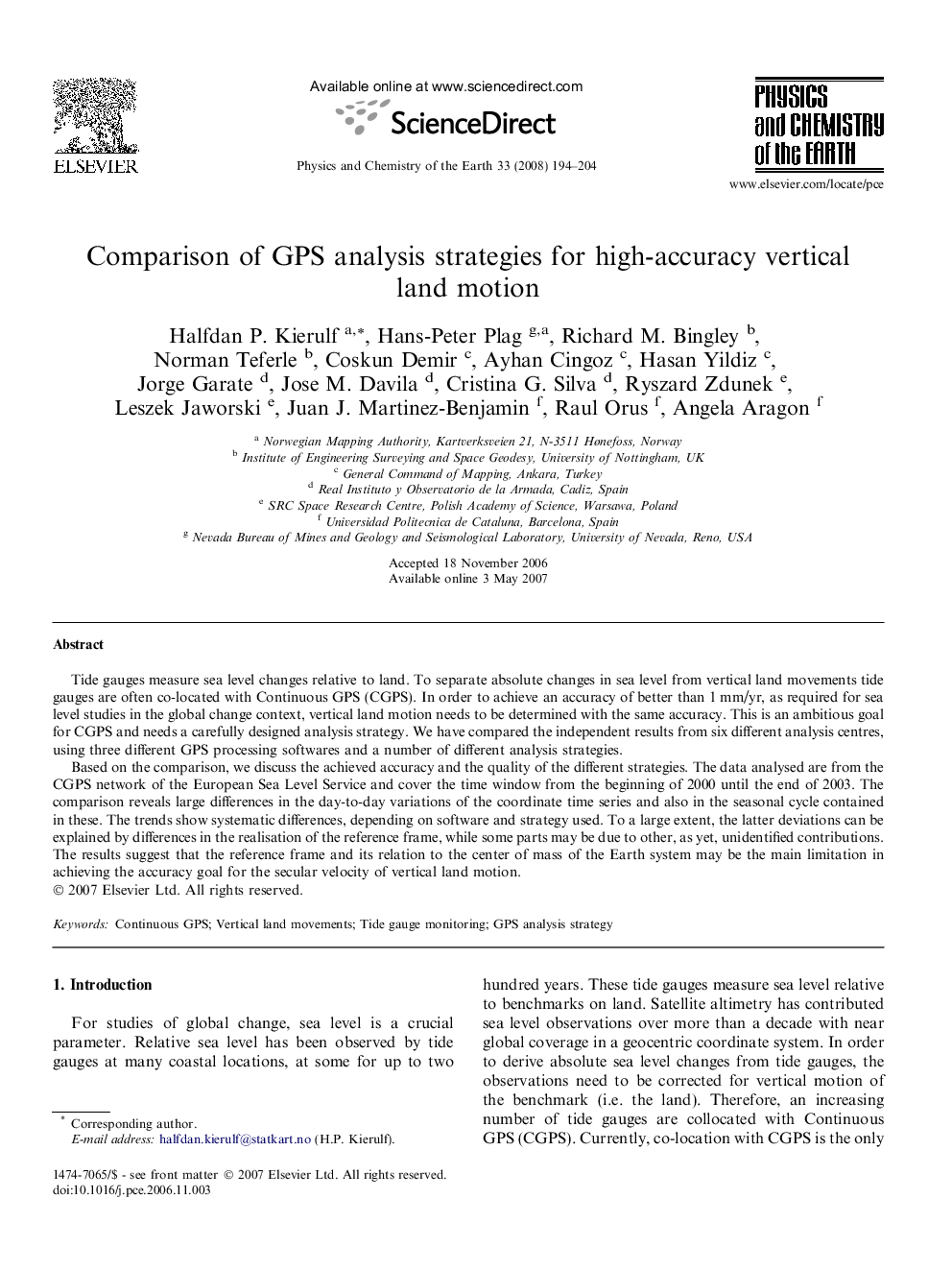| Article ID | Journal | Published Year | Pages | File Type |
|---|---|---|---|---|
| 4721519 | Physics and Chemistry of the Earth, Parts A/B/C | 2008 | 11 Pages |
Tide gauges measure sea level changes relative to land. To separate absolute changes in sea level from vertical land movements tide gauges are often co-located with Continuous GPS (CGPS). In order to achieve an accuracy of better than 1 mm/yr, as required for sea level studies in the global change context, vertical land motion needs to be determined with the same accuracy. This is an ambitious goal for CGPS and needs a carefully designed analysis strategy. We have compared the independent results from six different analysis centres, using three different GPS processing softwares and a number of different analysis strategies.Based on the comparison, we discuss the achieved accuracy and the quality of the different strategies. The data analysed are from the CGPS network of the European Sea Level Service and cover the time window from the beginning of 2000 until the end of 2003. The comparison reveals large differences in the day-to-day variations of the coordinate time series and also in the seasonal cycle contained in these. The trends show systematic differences, depending on software and strategy used. To a large extent, the latter deviations can be explained by differences in the realisation of the reference frame, while some parts may be due to other, as yet, unidentified contributions. The results suggest that the reference frame and its relation to the center of mass of the Earth system may be the main limitation in achieving the accuracy goal for the secular velocity of vertical land motion.
